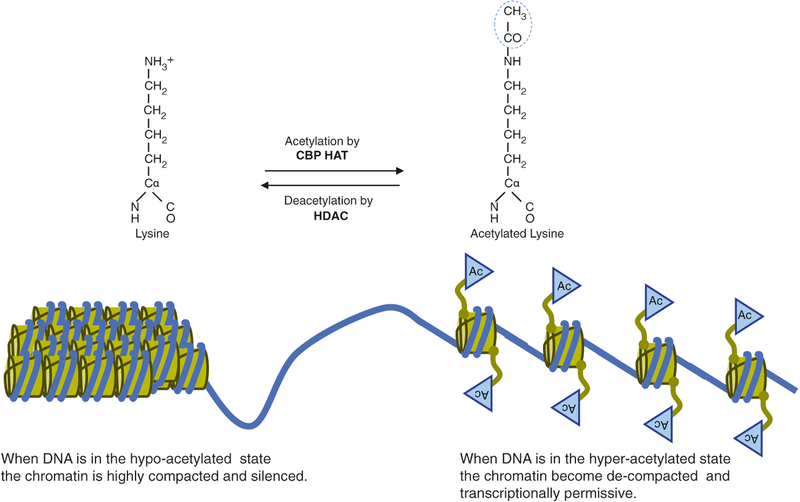Fig. 3.2.
Histone acetylation controls chromatin structure and function. Although CBP’s function as a platform to recruit other required coactivators appears to be indispensable, the requirement for HAT activity is transcription unit specific and may depend on the structure of chromatin at a specific locus [12, 13]. Histone deacetylase (HDAC)-mediated hypo-acetylation of histones promotes a compact chromatin structure state, subsequently silencing transcription. Promoter-specific recruitment of chromatin remodeling factors, such as CBP HAT, facilitates de-compaction of the chromatin structure, where genes are accessible for large multiprotein complexes that mediate gene expression (i.e., RNA polymerase II holoenzyme). CBP HAT has been implicated in epigenetic mechanisms that control higher cognitive functions [14]

